Kettlebell workout for beginners: Five moves to get started
Your first full-body kettlebell workout for beginners – and how to avoid common kettlebell mistakes
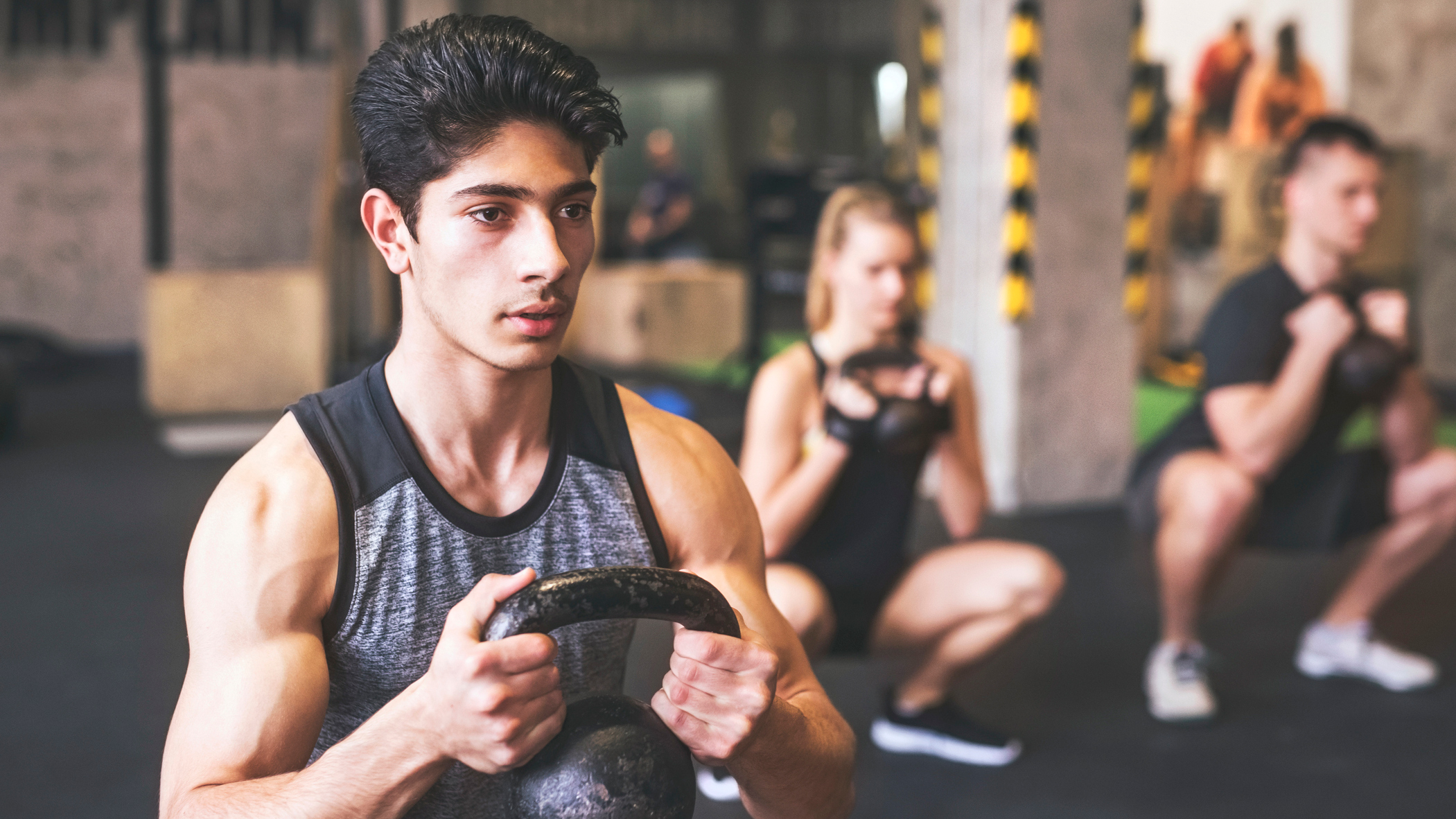

For a total body workout, kettlebell training is hard to beat. Sometimes mistakenly seen as the reserve of experienced gym-goers, kettlebells are actually a great tool for beginners too, providing aerobic as well as strength gains. Not sure where to start? We’ve got you covered with this PT-led kettlebell workout for beginners. We also take a look at the benefits of kettlebell training and mistakes commonly made when using a kettlebell for the first time. You can also check out our guide to the best kettlebells for strength and muscle.
Looking for something more advanced? Try our 30-minute kettlebell HIIT workout or our five move kettlebell workout for full body burn.
Why use a kettlebell?
There’s so much more to kettlebells than just building muscle. As well as being found to improve overall physical fitness, research sponsored by the American Council on Exercise, found working out with kettlebells could improve core strength by 70% as well as improve dynamic balance, aerobic capacity, and (perhaps more obviously) grip strength.
Your kettlebell workout may even improve your mental health, with research suggesting it can help reduce symptoms of depression up to four weeks after training.
“Kettlebells are an extremely versatile and effective piece of kit for a full-body workout,” says Olivia Tyler, a PT and kettlebell expert at the UK's largest health charity Nuffield Health. "They are also fun to use once you master the moves.”
The full-body kettlebell workout for beginners
Nuffield Health PT Olivia Tyler, leads us through her full body kettlebell workout for beginners. A few things to bear in mind:
- Aim for 10 reps of each move, then take a two-to-three minute break before repeating. Complete up to four sets.
- Don't forget to warm up! Olivia recommends five minutes: “Begin by jogging or marching on the spot, then move on to walk-out planks and bodyweight squats.”
1. Kettlebell Goblet Squat
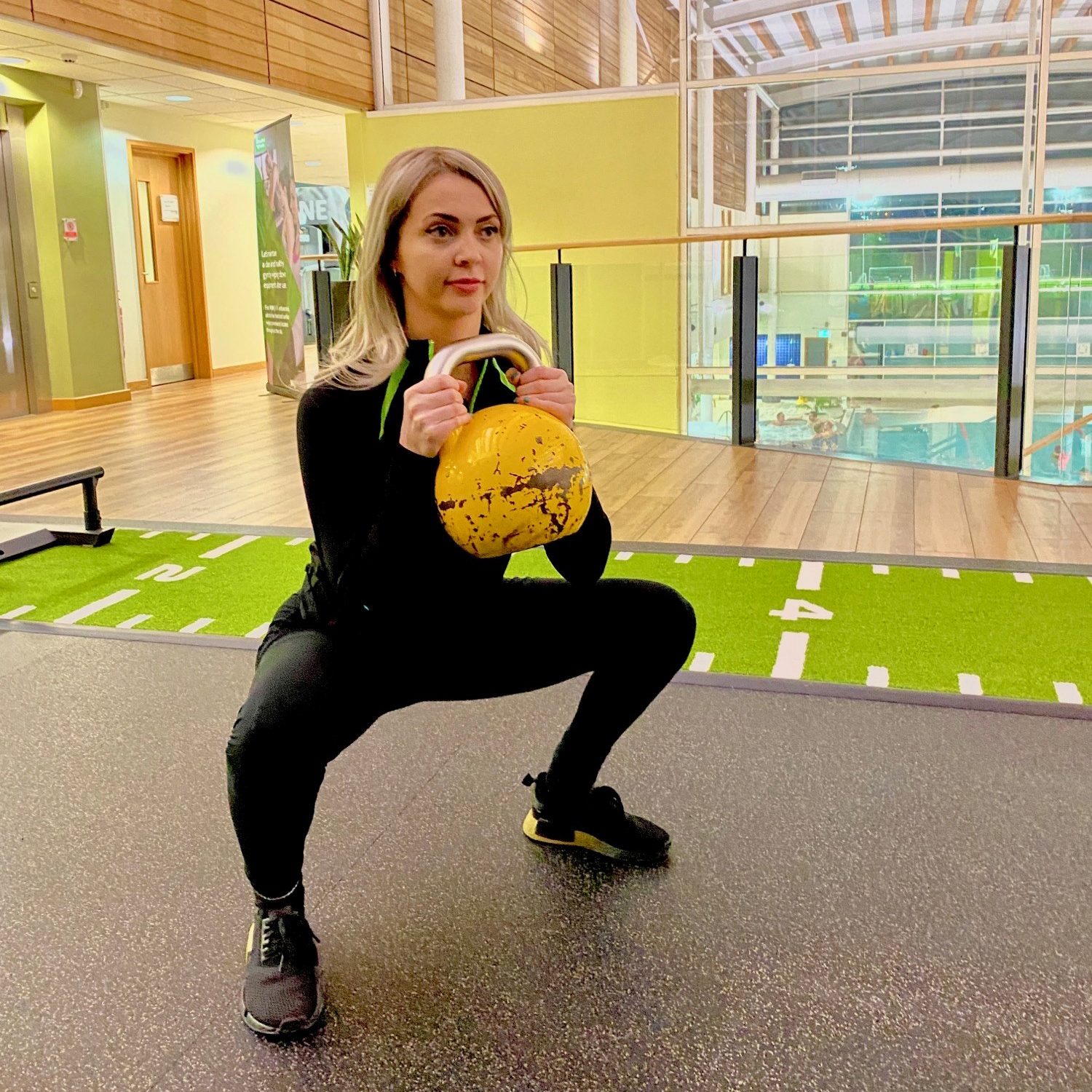
Targets: Quads, glutes, hamstrings, core and back.
Get the Fit&Well Newsletter
Start your week with achievable workout ideas, health tips and wellbeing advice in your inbox.
“Although primarily working your legs, goblet squats will condition your back and core too.”
- Stand with feet hip width apart.
- Hold kettlebell with both hands, close to chest, with hands around the main part of the kettlebell, handle facing downwards.
- Keep elbows in against your body.
- Squat deeply (if you experience any knee pain, stop when thighs are parallel to the floor and turn out knees and feet slightly). Keep your chest up, back straight and knees in line with toes.
- Push back up to standing.
- Continue for 10 reps.
2. Kettlebell deadlift
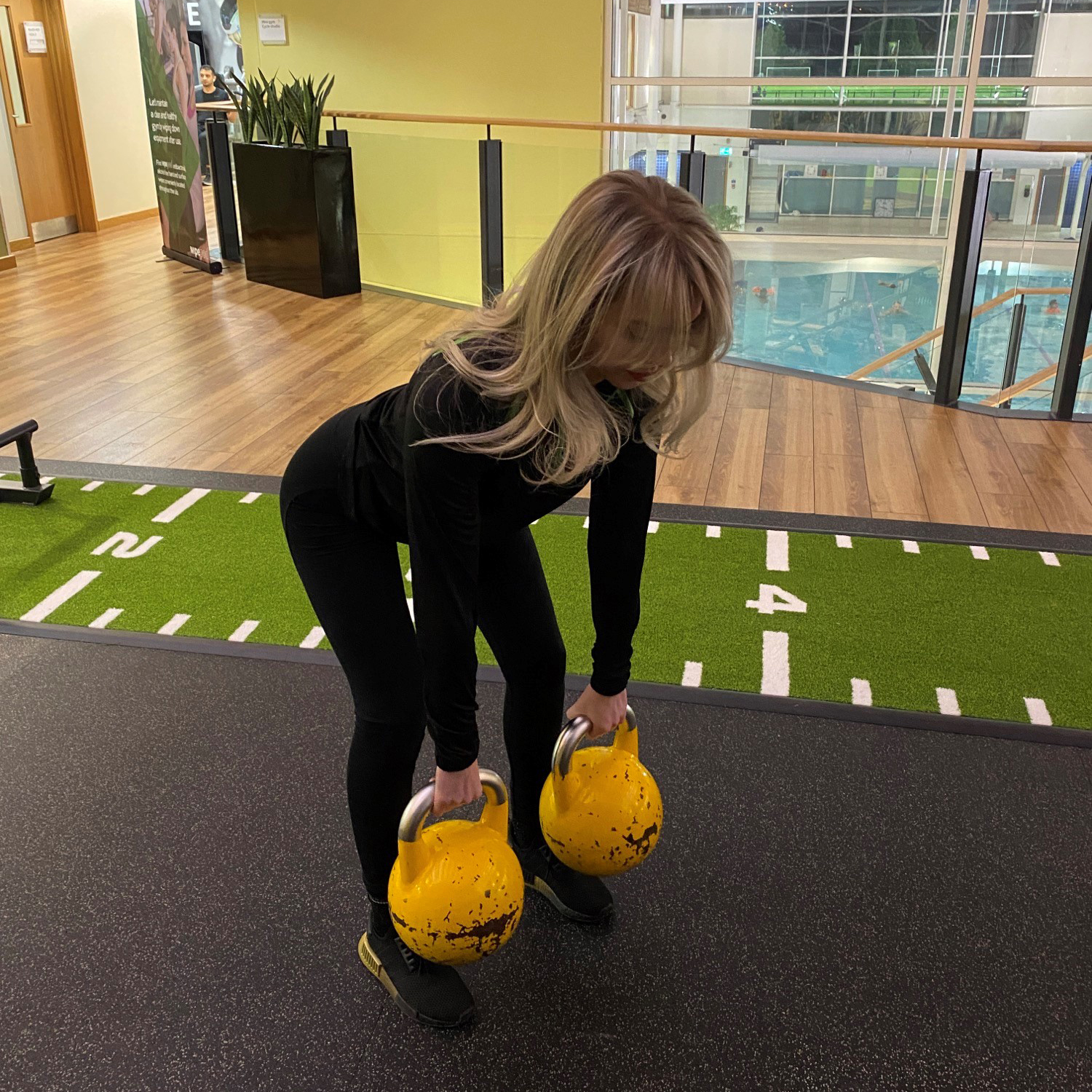
Targets: Hamstrings, glutes, core and back.
“Perfecting the deadlift can help with day-to-day activities such as picking your shopping up - or your kids!”
For more on the deadlift, check out our guide on how to deadlift with dumbbells and kettlebells.
- Stand with feet hip-width apart. Keep your chest up and look forward.
- The kettlebell should be on the floor, slightly forwards, between your feet.
- Hinge at your hips, keeping your back flat, with a slight bend in the knees. Grab the kettlebell with both hands.
- Push back up by driving your glutes forwards, keeping your arms and the kettlebell straight down.
- Lower the kettlebell back down (hinging in the same way).
- Continue for 10 reps.
3. Kettlebell bent-over row
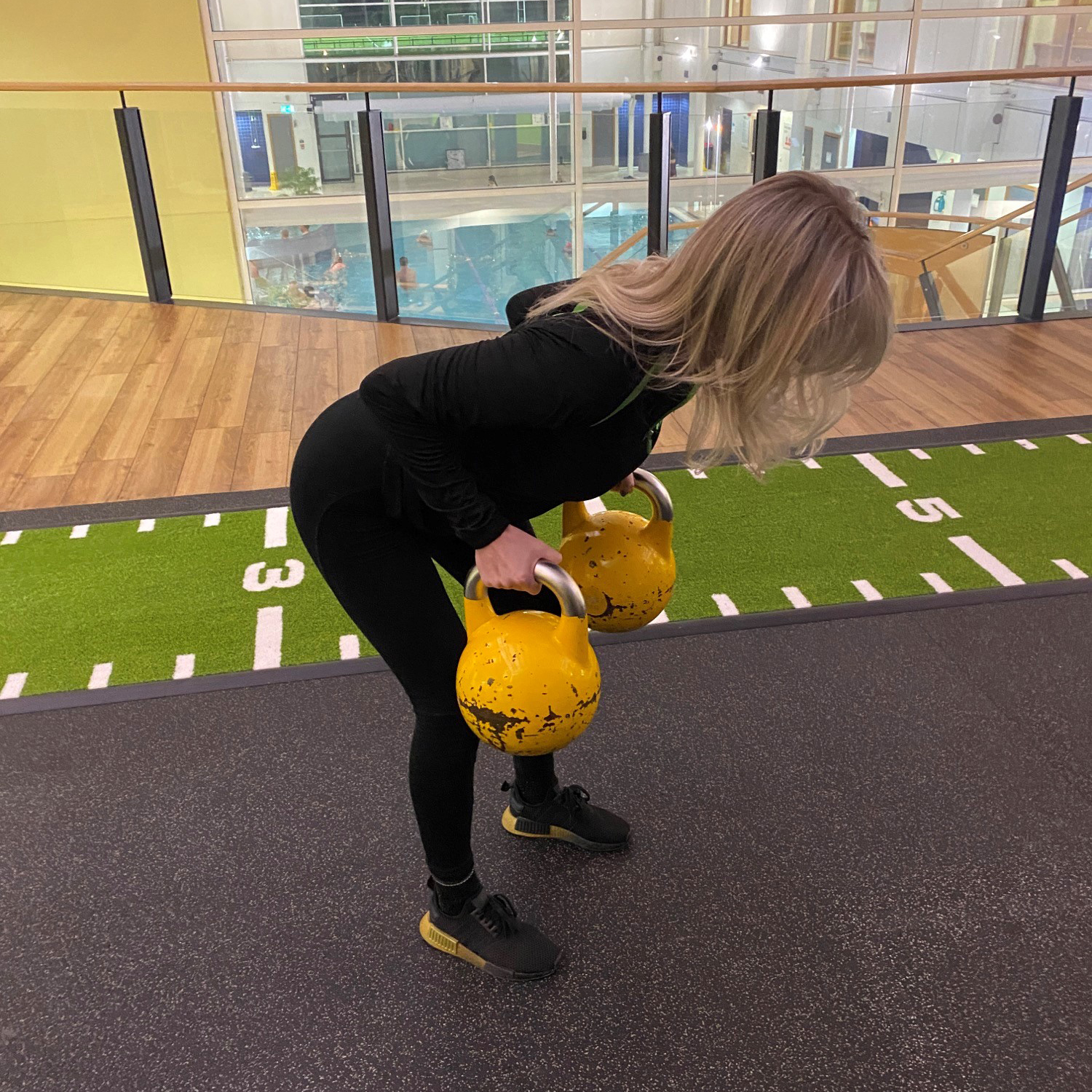
Targets: Back, core, biceps and triceps.
“This is another great compound move, working multiple muscles at once.”
- Hold the kettlebell in one hand and lean forwards, hinging at the hip. Keep your back straight, almost parallel to the floor and slightly bend knees.
- Engage core, then pull the kettlebell up, bending your elbow and rotating your hand so palm is facing inwards. Keep shoulder down.
- Straighten arm to lower the kettlebell.
- Continue for 10 reps then swap and repeat 10 reps on other side.
- To save time and increase intensity, you can do this move with a kettlebell in each hand.
4. Kettlebell lunge

Targets: Hamstrings, quads, glutes and core.
“This move is also great for improving your overall balance.”
- Stand with feet shoulder width apart.
- Hold one kettlebell in each hand, arms straight down.
- Step forwards into a lunge, making sure your knee is in line with your toes and your thigh is parallel to the floor. Keep your chest up, back straight and look forwards.
- Push back through your heel into standing position.
- Repeat with the other leg.
- Continue for 10 reps on each side.
5. Kettlebell Swing
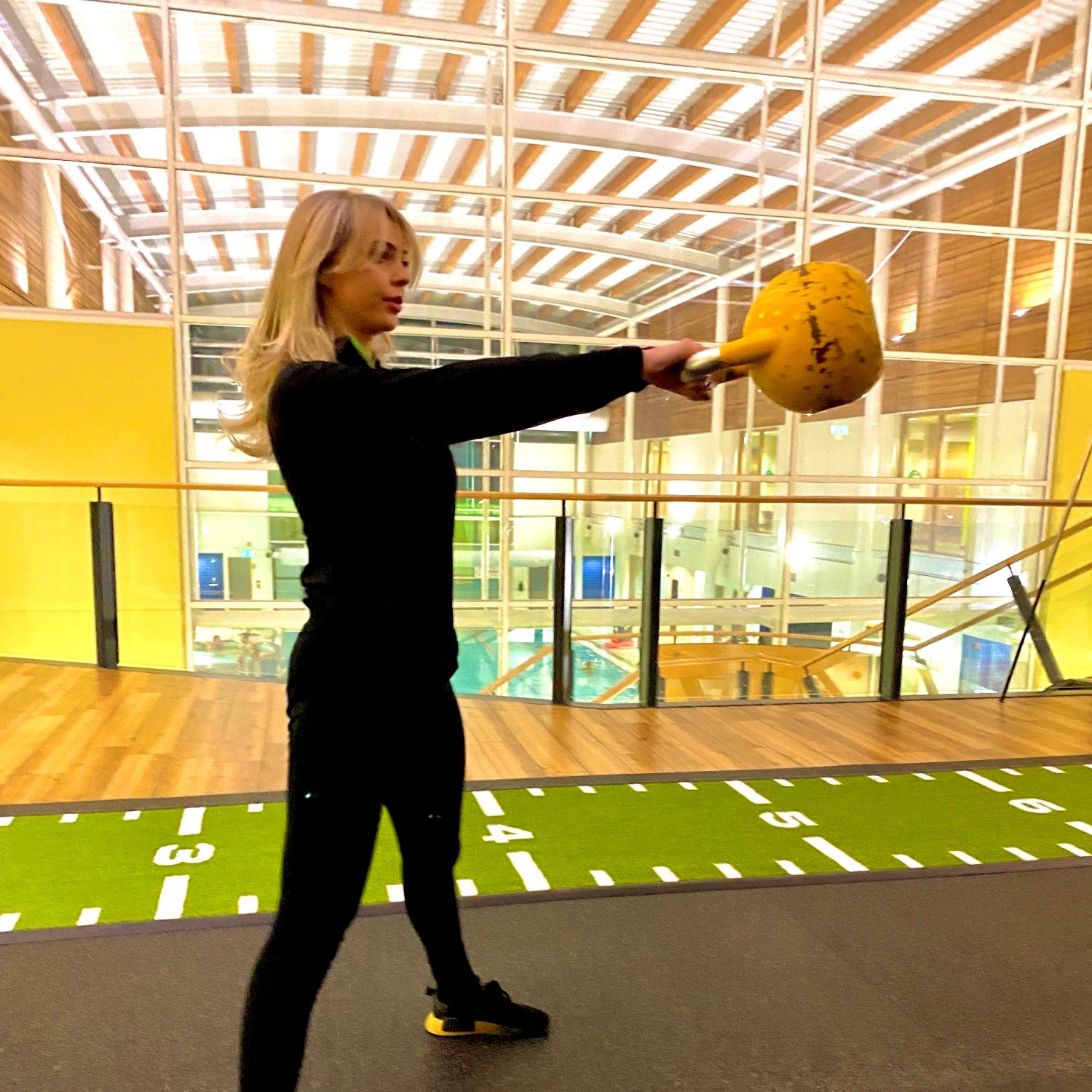
Targets: Glutes, core, hamstrings and back.
“This classic move helps build aerobic fitness as well as your muscles.”
- Stand with feet wider than hip width apart, holding one kettlebell with both hands.
- Hinging at the hips, bend knees, push your pelvis backwards and swing the kettlebell down between your legs and slightly behind you, keeping your back flat.
- Squeezing your glutes, thrust hips forwards, and swing the kettlebell back up until it is at shoulder height, keeping arms straight.
- Allow the kettlebell to almost feel weightless at the top, just above your chest line, before swinging it back down again between your legs.
- Continue for 10 reps .
Common mistakes when using kettlebells
“Some brands of kettlebell get smaller, the lower the weight but these aren’t always as easy to use,” says Olivia. “Competition kettlebells are nicest for beginners - because no matter the weight, they stay the same big size. It’s also easier to maintain good technique if your kettlebell size stays the same.”
Another tip is to make sure you use the right weight for your workout. “You want to use a weight that’s heavy enough to provide some resistance but not so heavy you can’t get through the set,” says Olivia. “If in doubt start with a lighter weight and build up slowly”.
As with any exercise, if you lose form when training with kettlebells, it can put pressure on the body and cause injuries, especially when you load with weights. You’re also less likely to see results. Common mistakes include leaning too far back on a swing, allowing knees to knock inwards on squats and lunges, not keeping knees in line with toes and allowing the chest to drop, arching the back, which increases pressure on the spine.
“Spend time perfecting form without a weight, then add in lighter kettlebells before using the ones you need for muscle growth,” says Olivia. “All kettlebell movements need to be controlled to stop your back jarring or causing injury - and hold on tight when you are swinging!”
Finally, make sure you warm up. Cold muscles are less supple and more likely to lead to injury. “Make sure you complete a 5 minute warm up before you begin,” says Olivia.
Claire is a freelance health, fitness and food journalist who has written for titles including Women’s Health, Top Santé, Woman & Home, Feel Good You, the Telegraph and Independent. She has a passion for being outside in nature and you’re more likely to find her walking in the woods or joining an exercise class in the park than pounding a treadmill in the gym. She also has a special interest in nutrition and healthy eating, having previously been Food Editor at Top Santé magazine. Her top fitness tip? Take your exercise outdoors wherever possible. It has been shown to boost the physical as well as mental health benefits of a workout and also to make you more likely to want to do it again!
-
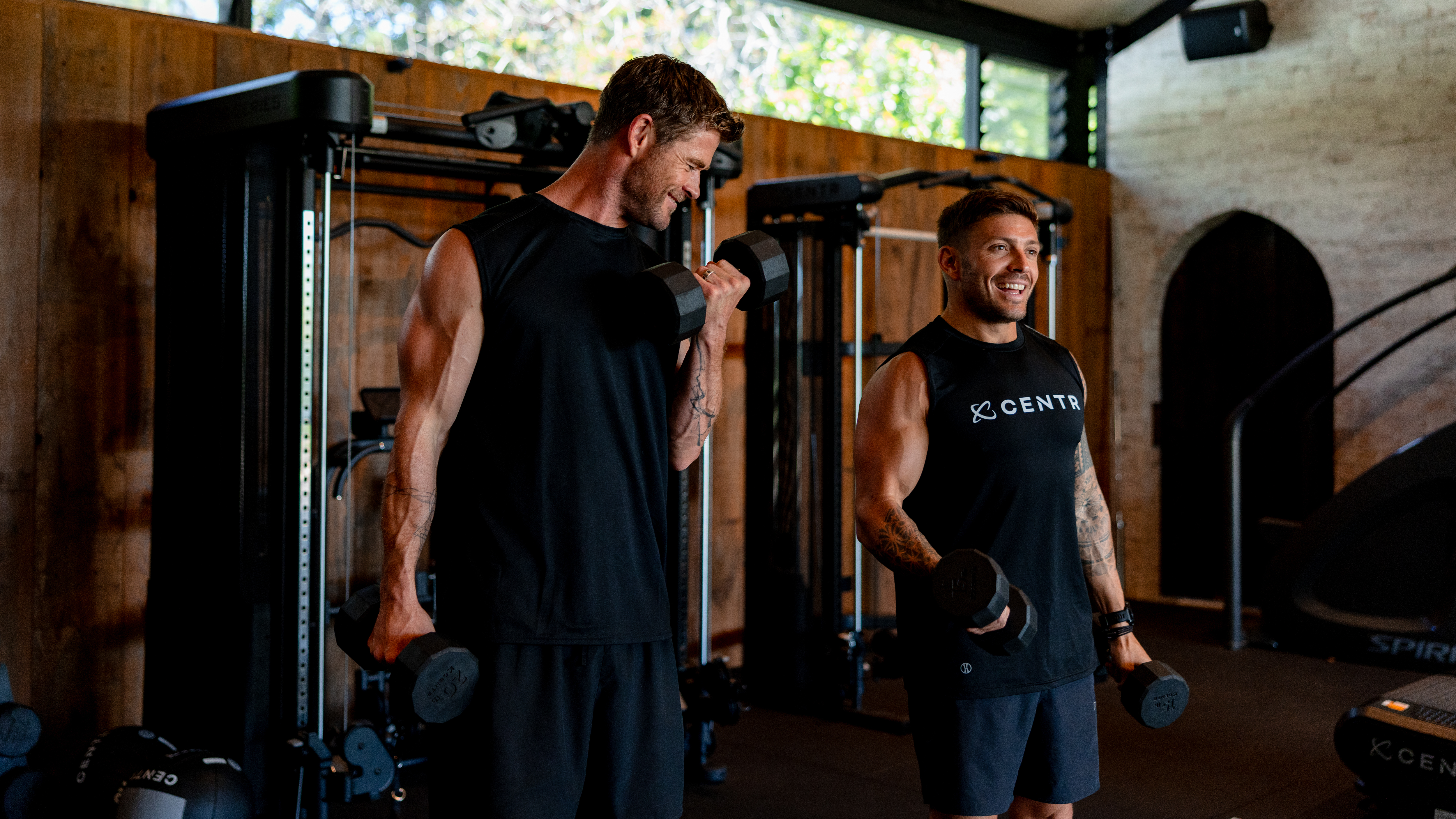 Build blockbuster arms and abs with Chris Hemsworth's go-to dumbbell circuit
Build blockbuster arms and abs with Chris Hemsworth's go-to dumbbell circuitAll you need are adjustable dumbbells and 20 minutes
By Sam Rider Published
-
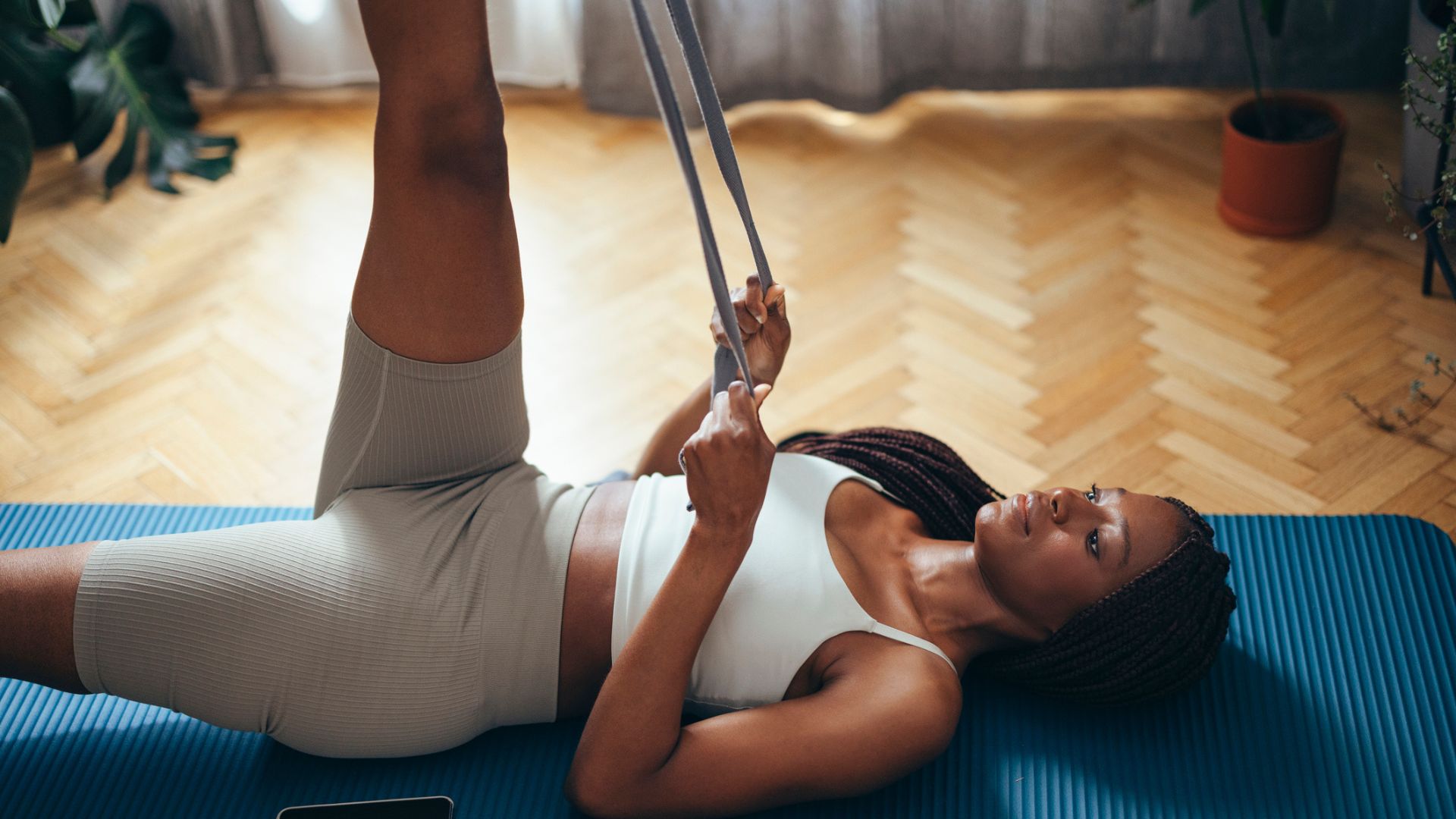 Forget crunches—if I wanted to improve core strength I'd do this neck-friendly Pilates workout
Forget crunches—if I wanted to improve core strength I'd do this neck-friendly Pilates workoutAnd it takes just five minutes
By Maddy Biddulph Published